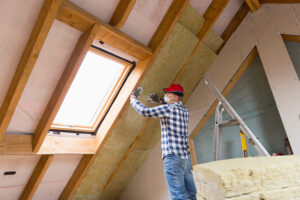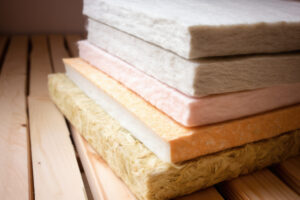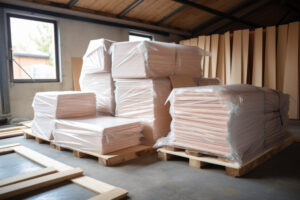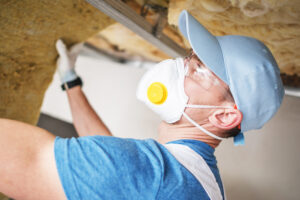Ever wonder what’s actually keeping you cozy behind those walls?
While you might not see it every day, the insulation in your home is silently working around the clock to keep your space comfortable and your energy bills in check.
Let’s pull back the drywall and take a fascinating look at why fiberglass insulation continues to reign supreme in residential construction, despite the growing number of alternatives available today.
The Fiberglass Dynasty: Why It Rules Residential Insulation
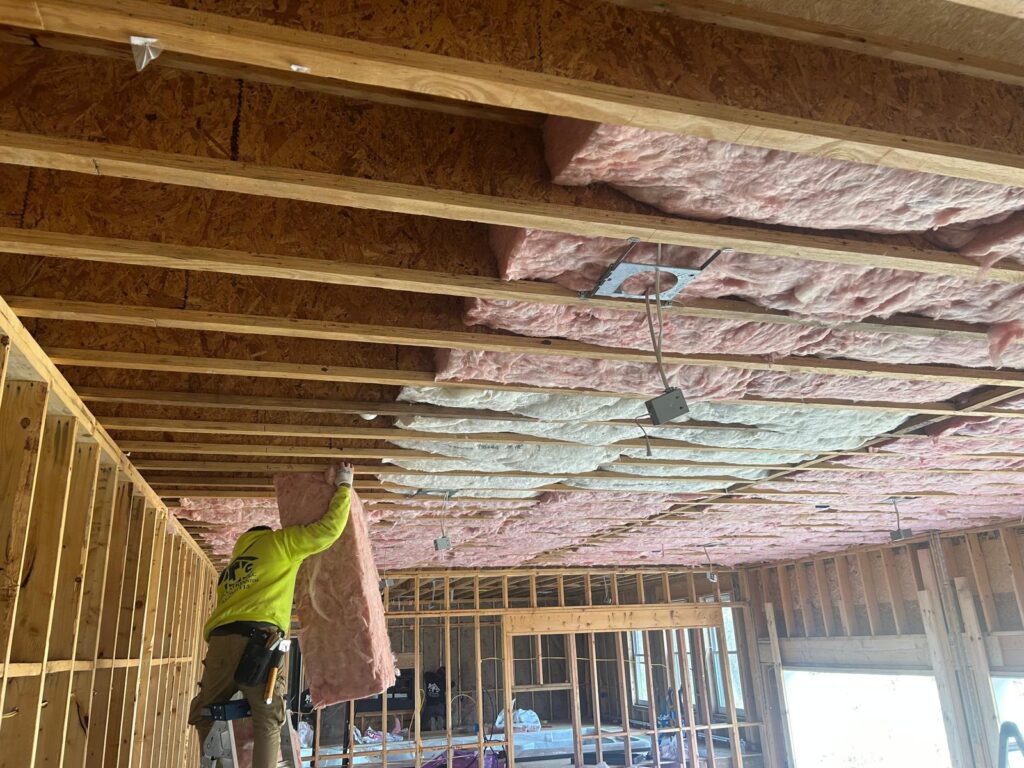
Insulation Installation is in process.
Think of fiberglass insulation as the reliable family sedan of the construction world – it might not be the flashiest option, but there’s a reason it’s in roughly 85% of American homes. This ubiquitous pink or yellow material, made from fine glass fibers, has dominated the residential insulation market for over 80 years. But why does it continue to be the go-to choice for most builders and homeowners?
The Cost Factor: More Bang for Your Building Buck
Let’s talk numbers that matter to your wallet. Fiberglass insulation typically costs between $0.64 to $1.19 per square foot, significantly less than most alternatives. For perspective:
- Spray foam might set you back $3-5 per square foot
- Cellulose averages $1-2 per square foot
- Mineral wool comes in at $1.40-2.10 per square foot
When you’re insulating an entire home, these differences add up faster than your teenager’s phone bill.
Installation Flexibility: The DIY-Friendly Option
Unlike its more complicated cousins, fiberglass comes in two user-friendly forms:
- Batts (pre-cut panels)
- Rolls (longer continuous pieces)
This flexibility means weekend warriors can tackle basic insulation projects without calling in the pros. Try that with spray foam, and you might end up with a YouTube-worthy disaster on your hands.
The Science Behind the Fluff
R-Value Reality Check
Here’s where things get interesting. Fiberglass typically offers an R-value of 2.2 to 3.8 per inch, depending on the product. While this might not seem impressive compared to spray foam’s R-6 to R-7 per inch, consider this:
Standard 2×4 wall cavity filled with:
- Fiberglass (R-13) costs about $0.85/sq ft
- Spray foam (R-21) costs about $4/sq ft
The question becomes: Is that extra R-value worth nearly five times the cost?
The Moisture Management Marvel
One of fiberglass’s underappreciated talents is its ability to maintain its thermal properties even when humidity levels fluctuate. Unlike cellulose, which can compact when wet, or foam, which can create moisture traps if improperly installed, fiberglass allows walls to breathe while still maintaining its structure.
Beyond the Pink Stuff: Understanding the Alternatives
Spray Foam: The High-Performance Option
Think of spray foam as the luxury sports car of insulation. Yes, it offers superior performance with its higher R-value and excellent air-sealing properties, but it comes with a premium price tag and requires professional installation. It’s like having a Ferrari – amazing performance, but not always practical for every garage or budget.
Cellulose: The Eco-Warrior
Made primarily from recycled paper products, cellulose is the environmentalist’s choice. However, its installation can be messier than a kindergarten art class, and its tendency to settle over time means you might need to top it off periodically.
The Hidden Advantages of Fiberglass
Fire Safety Features
Here’s something most people don’t know: fiberglass is naturally fire-resistant because it’s made from melted sand and recycled glass. It won’t fuel a fire like cellulose might, and it doesn’t release harmful chemicals when heated like some foam products can.
Sound Dampening Properties
While not marketed as a soundproofing solution, fiberglass actually provides decent acoustic insulation. Those glass fibers that trap heat also help absorb sound waves, giving you a quieter living space as a bonus feature.
Installation Insights: Getting It Right
The Proper Installation Protocol
Even the best insulation fails if installed incorrectly. Here’s what proper fiberglass installation looks like:
- No compression (squishing reduces R-value)
- Complete cavity fill (gaps are your enemy)
- Proper vapor barrier placement
- Careful cutting around obstacles
- Adequate protective gear (those fibers are itchy!)
Common Installation Mistakes
The most frequent fiberglass installation blunders include:
- Leaving gaps around electrical boxes
- Compressing the material to fit tight spaces
- Installing it backward (yes, there’s a right direction!)
- Forgetting to address air sealing before installation
The Future of Fiberglass
Innovation hasn’t stopped with traditional pink batts. Modern fiberglass products now include:
- Formaldehyde-free options
- Higher-density products for better R-value
- Integrated air barriers
- Enhanced fire resistance
- Better sound absorption properties
The industry continues to evolve, making today’s fiberglass insulation far superior to products from even a decade ago.
Remember, while fiberglass might not be the newest or most technologically advanced insulation option available, its combination of cost-effectiveness, performance, and ease of installation makes it the most practical choice for most residential applications. As building codes continue to evolve and energy efficiency becomes increasingly important, fiberglass manufacturers are rising to meet these challenges with improved products that maintain the material’s position as the king of residential insulation.

